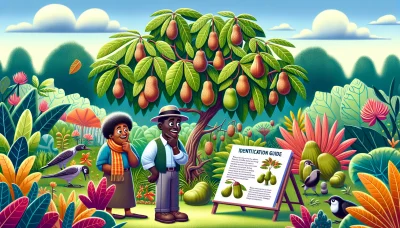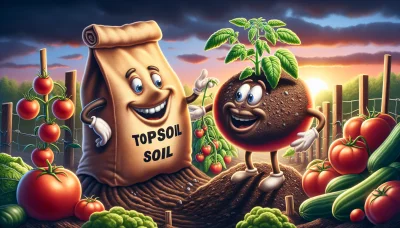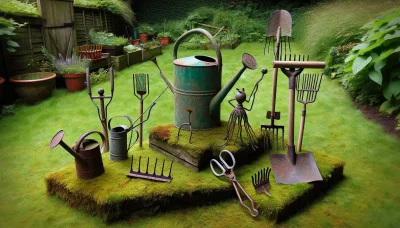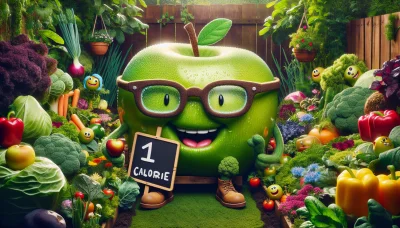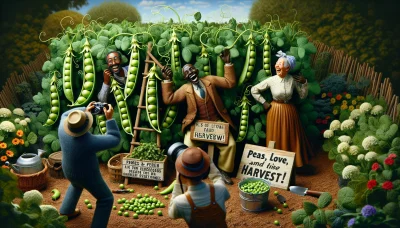Date fruit in spanish Quiz
Test Your Knowledge
Question of
Date Fruit in Spanish: A Gardener's Guide
The date fruit, known in Spanish as 'dátil', holds a special place in Spanish culture, symbolizing prosperity and hospitality. Its cultivation, deeply rooted in tradition, offers a fascinating challenge for gardening enthusiasts. Growing dates not only connects one to a rich cultural heritage but also presents a unique opportunity to cultivate a fruit that is both nutritious and delicious. This guide aims to explore the significance of the date fruit within Spanish culture and provide valuable insights for those interested in growing this remarkable fruit.
Understanding Date Fruit Varieties
Dates are a staple fruit in many cultures around the world, including those in Spanish-speaking countries. Among the numerous varieties, some stand out for their unique flavors, textures, and culinary uses. The Medjool date is highly prized for its large size, soft texture, and sweet taste, making it a favorite for eating fresh. Another variety, the Deglet Noor, is known for its slightly firmer texture and nuttier flavor, often used in cooking and baking. In Spanish-speaking regions, these varieties are cherished not only for their delicious taste but also for their nutritional value, providing a natural source of energy and essential nutrients.
Cultivating Date Palms in Your Garden
Growing date palms can be a rewarding experience if you meet their basic requirements. These majestic trees prefer well-draining soil, as waterlogged conditions can lead to root rot. A sandy loam soil is ideal, providing the right balance of drainage and nutrient retention. Date palms thrive in hot, arid climates, mimicking their native desert environments. They require plenty of sunlight, so choose a location that receives full sun throughout the day. When it comes to watering, date palms have moderate needs but are quite drought-tolerant once established. During the growing season, ensure they receive consistent moisture, especially in extremely hot conditions, to support their growth and fruit production.
Planting and Care Tips for Date Palms
Planting Instructions
- Choose a sunny location with well-draining soil.
- Ensure the planting site is spacious enough to accommodate the full grown size of the palm.
- Dig a hole twice as wide and as deep as the root ball of your date palm.
- Mix some organic matter or compost into the soil removed from the hole to improve fertility.
- Place the date palm in the hole, making sure it's level with the surrounding soil.
- Backfill the hole with the amended soil, gently tamping down to remove air pockets.
- Water thoroughly after planting to settle the soil around the roots.
Ongoing Care Tips
Watering
- Water newly planted palms two to three times a week for the first few months to ensure a good start.
- Once established, date palms require deep but infrequent watering. Allow the soil to dry out between waterings.
- In hot, dry climates, increase watering frequency to prevent stress.
Fertilizing
- Feed date palms with a palm-specific fertilizer three to four times during the growing season.
- Apply according to the product's instructions, typically around the base of the palm.
- Avoid over-fertilizing, which can harm the palm.
Pruning
- Prune dead or dying fronds once a year to maintain health and appearance.
- Remove fruit stalks to redirect energy to growth and health of the palm.
- Always use clean, sharp tools to avoid damaging the palm.
Pests and Diseases Affecting Date Palms
Date palms are susceptible to a variety of pests and diseases that can significantly impact their health and productivity. Common pests include the red palm weevil and the date palm leafhopper, which can cause severe damage to the trees. Diseases such as Bayoud disease, caused by the fungus Fusarium oxysporum, and lethal yellowing, a phytoplasma disease, are also significant threats. Management of these issues involves regular monitoring of the trees for signs of distress, implementing proper irrigation and fertilization practices to maintain tree health, and the use of biological or chemical controls when necessary. Early detection and prompt action are crucial in preventing the spread of these pests and diseases, ensuring the healthy growth of date palms.
Harvesting and Storing Dates
To properly harvest date fruits, wait until they are fully ripe and have a deep brown color. Gently twist the fruit from the stem, being careful not to damage the branch. For the best storage, keep dates in an airtight container at a cool temperature. If stored in the refrigerator, they can last up to a year, while at room temperature, they should be consumed within a few weeks to maintain optimal freshness.
Enjoying Your Dates: Recipe Ideas
- Stuffed Dates with Goat Cheese and Walnuts: A simple appetizer that combines the sweetness of dates with the tangy flavor of goat cheese, topped with a crunchy walnut.
- Chocolate Covered Dates: Dip dates in melted dark chocolate and let them cool. You can also stuff them with almonds or peanuts before dipping for an extra surprise.
- Medjool Date Smoothie: Blend dates with bananas, almond milk, and a dash of cinnamon for a sweet, energizing smoothie.
- Date and Walnut Bread: A moist, sweet bread that's perfect for breakfast or as a snack. Mix chopped dates and walnuts into your batter for a delicious treat.
- Arugula, Date, and Parmesan Salad: A fresh salad with a sweet twist. Combine arugula, thinly sliced dates, shaved Parmesan, and a balsamic vinaigrette for a quick and healthy meal.
- Chicken Tagine with Dates and Olives: A savory dish that showcases dates in a whole new light. The sweetness of dates balances the saltiness of the olives and the richness of the chicken.
- Homemade Date Bars: Mix chopped dates with oats, nuts, and honey, then bake until golden. A perfect energy bar for on-the-go snacks.
- Date and Bacon Wraps: Wrap dates in bacon and bake until crispy. A simple yet irresistible combination of sweet and savory flavors.




